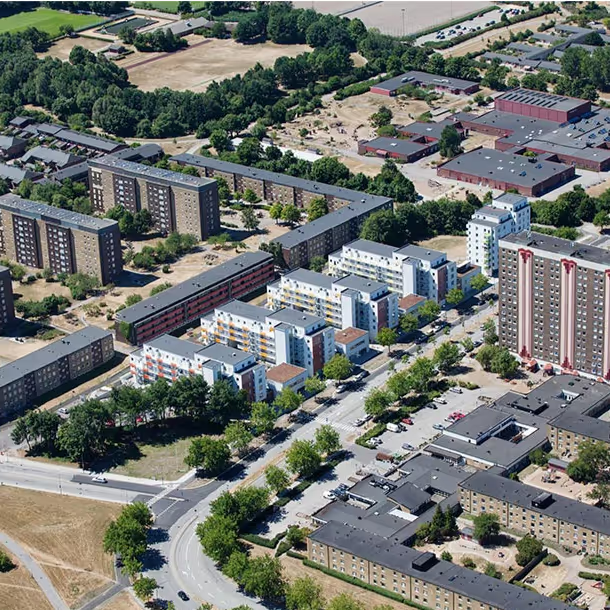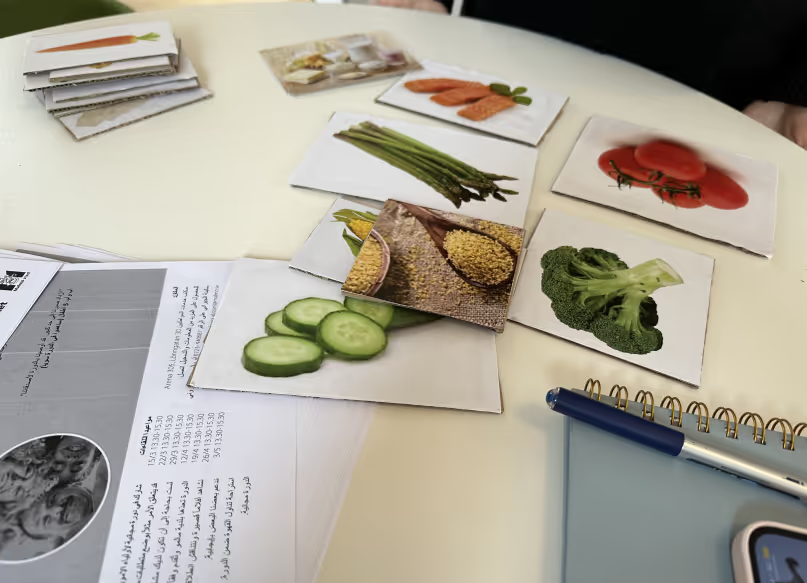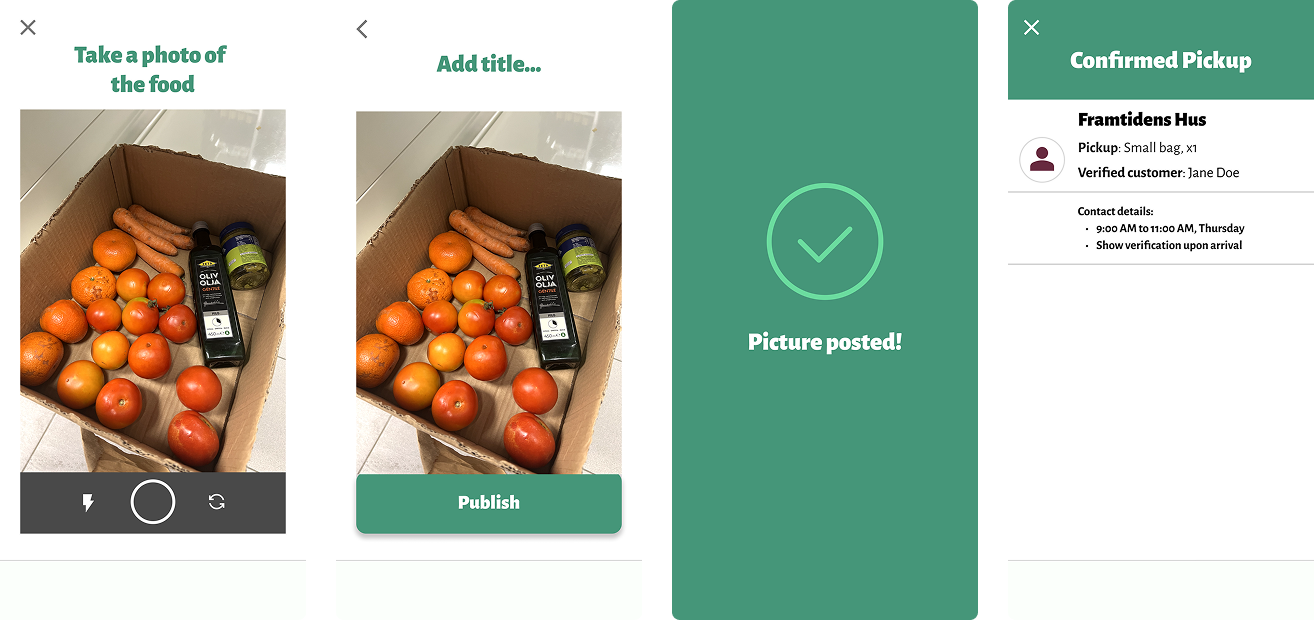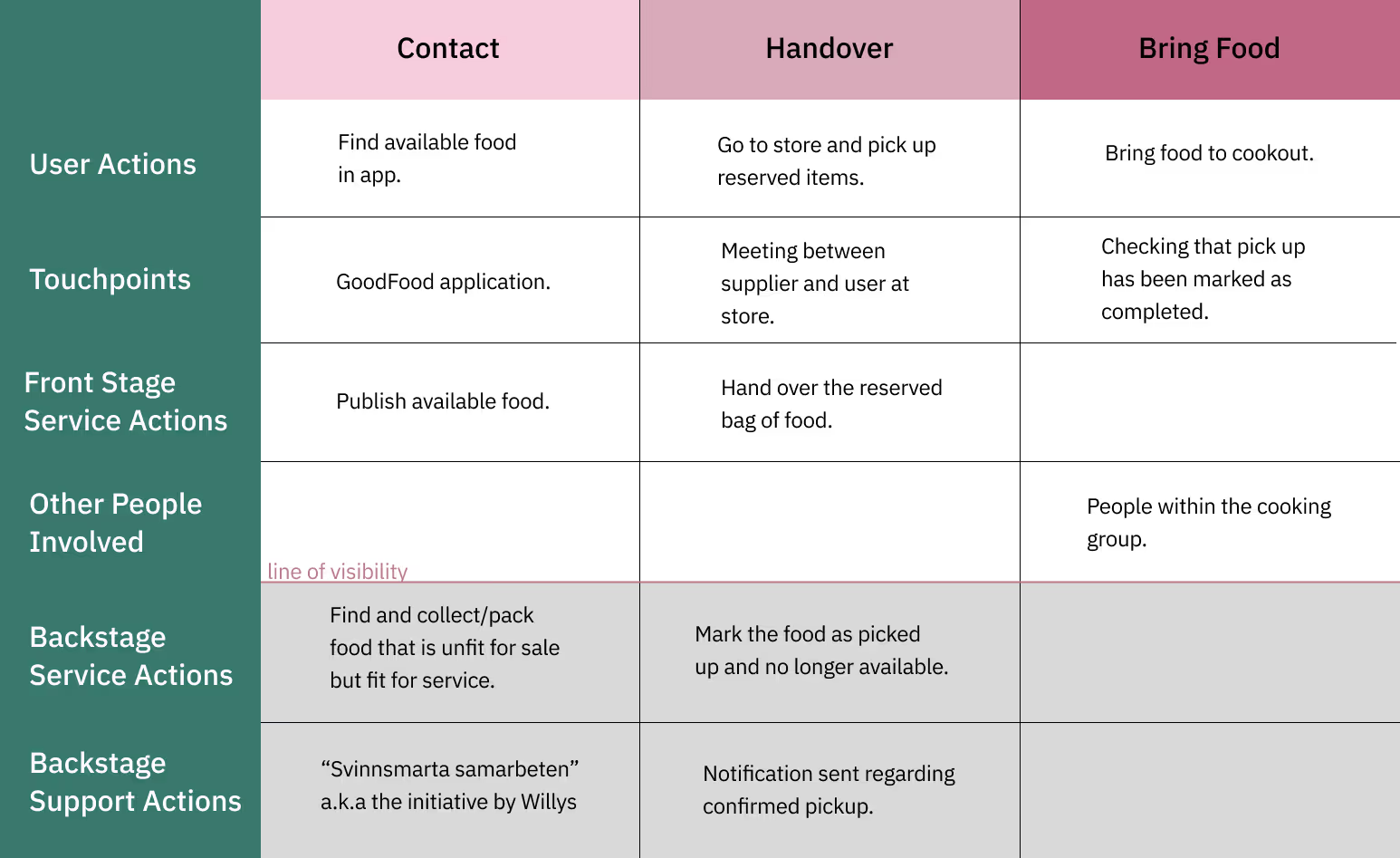CONTEXT
Service Design Course
ROLE
Service Designer
TIMELINE
Jan 2023 - Mar 2023

CONTEXT
Service Design Course
ROLE
Service Designer
TIMELINE
Jan 2023 - Mar 2023
Designing a proposal for community-driven food sharing service in Lindängen, Malmö — with a thoughtfully crafted app as the central touchpoint to connect neighbors, reduce waste, and strengthen local ties.
During field research in Lindängen, we found a strong community culture around cooking and food-sharing among women, despite budget and space constraints. While local stores like Willys were already donating surplus food through Svinnsmarta Samarbeten, there was a disconnect between these efforts and the community.
This led us to design the concept GoodFood: a mobile app connecting stores with local cook-out groups to support existing practices, reduce food waste, and improve access to surplus food through a simple digital tool.
Interviews with organizations and residents in Lindängen revealed a strong interest in cooking and food-sharing—especially among women. Several ongoing community events already focus on food, health, sustainability, and collective meals.
In reaching out to local store Willys, we learned about their initiative Svinnsmarta Samarbeten, where surplus food is donated to organizations—highlighting an existing foundation for collaboration between stores and community groups.

Insight 1: There is a large community of women that have a strong interest in cooking food and in the practice of food-sharing, as evidenced by existing cook-out activites.
Insight 2: Willys has an ongoing practice of donating food to different organizations.
Pain points: Cook-outs lack financial support, and are forced to minimize the amount of food they cook, limit the amount of ingredients used, or cancel the events.
To build trust and foster openness, we participated in one of the community’s cook-outs, where meals were prepared using low-cost ingredients.
Right after the cook-out, we facilitated a co-design activity using food image cards. Participants categorized the foods based on what they felt they could cook with, wouldn’t cook with, and wanted to cook with. This setting created a relaxed and familiar environment, leading to more honest and insightful input.

Participants were open to using food close to its expiry date or slightly damaged.
They were hesitant about expired bread, milk, and yoghurt.
Women demonstrated strong knowledge of how to cook creatively with available food.
Research showed that enhancing existing food-sharing practices in Lindängen was more effective than creating new services. Budget-constrained cook-out groups could benefit from partnerships with stores redistributing surplus food—reducing waste for stores while providing affordable ingredients for communities.
With Svinnsmarta Samarbeten already active and locals willing to cook with surplus ingredients, we focused on strengthening these connections through a mobile app linking stores with cook-out groups, supporting and scaling the existing ecosystem.
GoodFood is a mobile app that connects stores with surplus food to local cook-out groups. Stores can easily list available leftover packages, while cook-out groups can browse and claim them.

Since the community in Lindängen already rely on platforms such as WhatsApp and Facebook to organise cook-outs, we decided not to include features for in-app communication or cook-out creation. This decision was made to prioritise convenience and efficiency for both users and store staff, while respecting the community’s existing self-organisation practices.

On the store side of things, the stores we talked to already had systems in place for counting damaged or expired food. As such, the service would not introduce a significant increase in administrative tasks for employees.
Food donation to charities and other organisations is an existing practice.
A step towards meeting the EU goals for reducing food waste.
Supporting local cook-outs helps stores build community trust and visibility, creating opportunities for meaningful, grassroots publicity.

This project was, at least for me, a crash course in design team dynamics—especially when every member of the design team occupies the same role: that of a Service Designer. While there was some friction at first, with strong wills pulling in different directions, we quickly figured out how to cater to each others strengths, and how to combine our unique skill-sets.
For example, I was (and still am) an avid home cook, and could offer particular insights into that world. Another group member spoke Arabic, which facillitated much deeper connection and communication with our users. We often focus on professional skills, but personal abilities—like cooking, language, illustration, and videography—proved just as essential. Without them, the project would’ve looked very different, and arguably, worse.